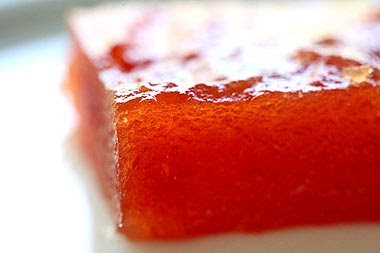Many European styles of sausages and cold cuts are represented in Brazilian cuisine - from hot dogs, to bratwurst and on to pepperoni. But the most popular sausages of all must be the group that goes under the Portuguese name linguiça (pronounced lin-GWEE-sa). The name itself comes from Portugal and attests to the antiquity of this style of sausage - linguiça is related to the Italian word luganega, a style of Italian sausage. That Italian word is derived from an ancient tribe in the Italian peninsula, the Lucanians. Recipes for linguiça-style sausages can be found in cookbooks from classical Rome.
In 21st century Brazil, the linguiça family includes at least a dozen different styles of sausage. Brazilian Ministry of Agriculture regulations define linguiça as:
A processed meat product, containing meat, with or without the addition of animal fat, and seasonings, stuffed into a natural or artificial sausage casing.
That definition is very broad and could fit any number of styles of sausages. However, the regulation goes on to define with greater precision, by name, the most popular types of linguiça:
Linguiça Calabresa - A product that contains exclusively pork meat and which must have the spicy flavor characteristic of the use of calabresa peppers, stuffed into sausage casings or not, dried and/or cooked, and smoked or unsmoked.
Linguiça Portuguesa - A product that contains exclusively pork meat and seasoning ingredients, processed by hot smoking. The traditional presentation is in the shape of a horseshoe and the seasonings include a large amount of garlic.
Linguiça Toscana - A product that contains exclusively pork meat, raw or cured, with or without additional pork fat, and seasoning.
Paio - A product that contains a mixture of pork and beef (maximum 20% beef), stuffed into natural or artificial sausage casings, seasoned and cured, and subject to hot smoking.
In addition to these traditional styles, Agriculture Ministry regulations permit the sale of the other sausages in the linguiça category: beef linguiça , pork linguiça , pork loin linguiça ,pork loin and fresh ham linguiça, and smoked pork linguiça.
For Brazilians, what type of linguiça to use in a particular dish varies from recipe to recipe. For example, feijoada recipes generally call for linguiça toscana and paio, the preferred topping for pizzas is linguiça calabresa, and garlicky linguiça portuguesa is popular at churrascos.
In the next few days, we'll offer up some Brazilian recipes for linguiça, as well as a recipe for making Brazilian linguiça at home.






































